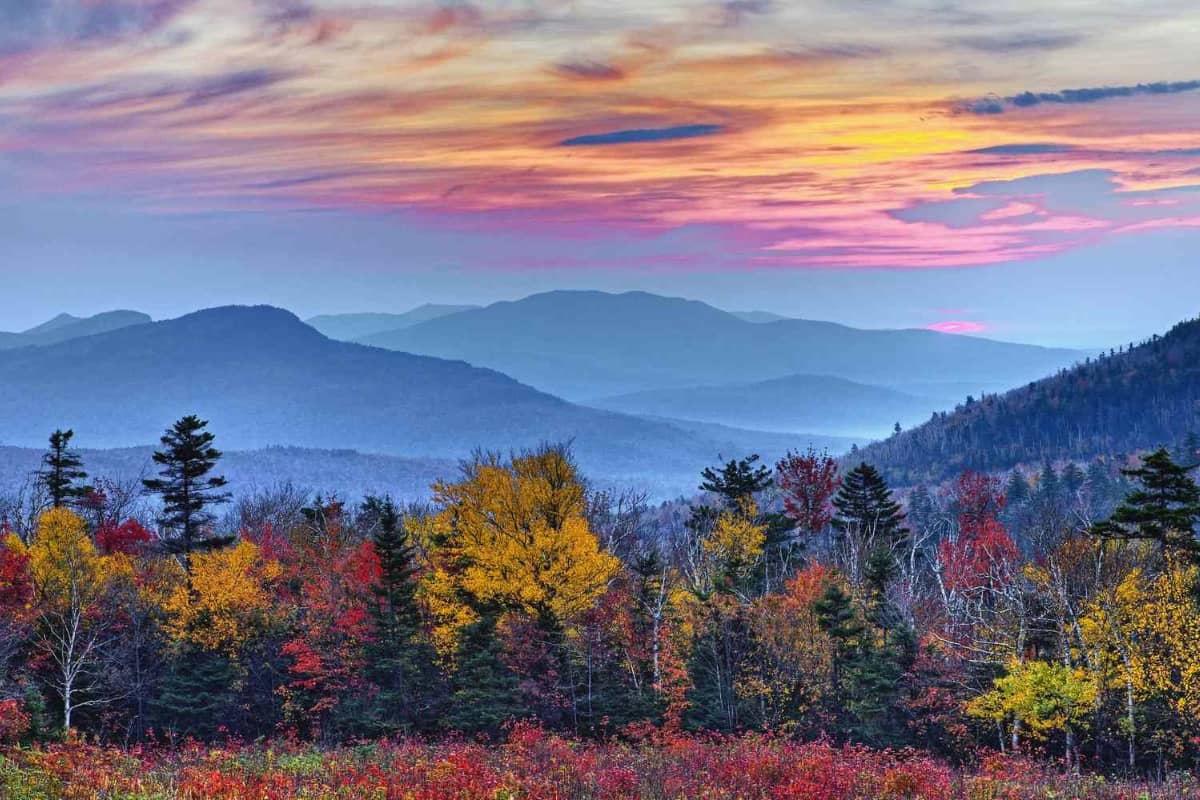The White Mountain National Forest in New Hampshire is a vast, picturesque wilderness that draws millions of visitors each year, offering scenic beauty, challenging hikes, and opportunities for wildlife sightings. However, beneath its allure lie hidden dangers that can pose serious risks to unprepared hikers and adventurers. This article explores six hidden dangers of the White Mountain National Forest and provides valuable insights to help visitors enjoy their experience safely.
1. Unpredictable and Severe Weather
One of the most significant dangers in the White Mountain National Forest is the unpredictability of the weather. While the forest may seem tranquil and calm at lower elevations, conditions can change drastically at higher altitudes. Mount Washington, known for its notoriously erratic weather, experiences some of the highest wind speeds in the world. Wind gusts can reach up to 80-100 miles per hour, and temperatures can plummet suddenly, even during summer months.
Exposure to cold temperatures and wind chills can lead to hypothermia and frostbite. The weather on the mountain peaks can include severe snow, rain, or sudden storms, which not only affect visibility but also the ability to hike safely. It’s essential to check weather reports before heading out and to carry appropriate gear, including a wind-resistant jacket, gloves, and extra layers.
2. Rugged and Remote Terrain
The rugged terrain of the White Mountains is another challenge that catches many hikers off guard. The trails can be steep, rocky, and uneven, making navigation tricky, especially for inexperienced hikers. Some trails, like the Presidential Range or those leading to Mount Washington, are notoriously tough, with sharp inclines and loose rocks that can make footing unstable. Injuries like sprained ankles and twisted knees are common.
Moreover, the vastness of the White Mountain National Forest—spanning over 800,000 acres—adds another layer of danger. While some trails are close to highways, others are so remote that it could take hours or even days to encounter another hiker. If someone gets injured or lost in these remote areas, it may take a long time for help to arrive.
It’s essential to hike with a group whenever possible and let someone know your itinerary in case of emergencies. Carrying a GPS device, maps, and extra supplies is also crucial to ensuring safety in these remote locations.
3. Wildlife Encounters
White Mountain National Forest is home to a variety of wildlife, including black bears, moose, and smaller animals like foxes and raccoons. While seeing wildlife can be exciting, it can also be dangerous, especially if animals feel threatened or if hikers behave irresponsibly. Black bear encounters, though rare, have occurred when people inadvertently leave food behind or approach the animals too closely.
Moose, often seen in the early mornings or evenings, can also pose a danger. Though they appear calm, they can become aggressive, particularly if they feel cornered or during mating season. They are massive animals, and any close interaction could lead to injuries.
To avoid dangerous wildlife encounters, hikers should keep their distance, avoid feeding any animals, and store food securely in bear-proof containers. In bear country, making noise while hiking can help prevent surprise encounters.
4. Insects and Ticks
A less obvious but equally serious danger in the White Mountain National Forest comes in the form of insects, particularly black flies and ticks. During the warmer months, swarms of black flies can be an annoyance and may cause bites. However, ticks pose a more serious health risk as they are carriers of Lyme disease, which has become more prevalent in New Hampshire.
Hikers should always carry insect repellent, wear long sleeves and pants, and perform regular tick checks during and after their hike. Lyme disease can be debilitating if untreated, so early detection and removal of ticks are critical.
5. Fatigue and Physical Challenges
Hiking in the White Mountains requires a considerable level of physical fitness. Even some of the shorter trails involve significant elevation gains, rocky terrain, and the need for endurance. Mount Washington, for instance, is compared to climbing the equivalent of several Empire State Buildings, a feat that can exhaust even experienced hikers.
Many visitors underestimate the difficulty of the trails, which can lead to fatigue, dehydration, and medical emergencies. It’s essential to bring extra food and water, plan for frequent rest breaks, and know your physical limits. Overexertion is a common cause of accidents, and hikers should be prepared for a slower pace than they might expect.
6. Search and Rescue Risks
One of the more overlooked dangers in the White Mountain National Forest is the risk of getting lost or injured, leading to the need for a search and rescue (SAR) mission. Every year, the New Hampshire Fish and Game Department, along with other organizations, conduct numerous rescue operations in the area. Many of these rescues occur because hikers venture off-trail, underestimate the time required to complete a hike, or fail to bring adequate supplies.
Rescue missions can be both expensive and dangerous for the volunteers involved, particularly in remote and difficult-to-access areas. Hikers can reduce the risk of needing rescue by sticking to established trails, knowing the terrain, and ensuring they are adequately prepared with maps, GPS, and first-aid kits.
New Hampshire has even implemented a policy where hikers found negligent may be billed for their rescue, adding a financial cost to the physical dangers of hiking unprepared.
Conclusion
The White Mountain National Forest offers some of the most breathtaking landscapes and thrilling outdoor experiences in the northeastern United States. However, the hidden dangers—unpredictable weather, rugged terrain, wildlife encounters, insect-borne diseases, physical challenges, and the potential need for search and rescue—make it a place where preparation and caution are essential.
By being aware of these hazards and taking the necessary precautions, visitors can safely explore the beauty of the White Mountains and enjoy all that this remarkable forest has to offer.






